The Grand Slam tournaments are the pinnacle of professional tennis, bringing together the best players from around the world. These prestigious competitions, held in four cities on three continents, combine rich history, traditions, and a unique atmosphere. In this article, we will take a closer look at the legendary events of the sports world.
The history dates back to the late 19th century when tennis began to transition from an amateur sport to a professional one. These tournaments are the oldest in the world of tennis and have maintained their significance for decades. The first Grand Slam tournament, Wimbledon, took place in 1877, marking the beginning of a tradition that continues to this day. It was later joined by the Australian Open, Roland Garros, and the US Open, forming the four most prestigious events in tennis.

The Australian Open is the first tournament of the season, held in January in Melbourne. Known as the “Grand Slam of the Asia/Pacific” due to its hot weather and special friendly atmosphere.
Key features of the event:
Since 1988, the tournament has been held at Melbourne Park, which offers spectators modern facilities and high-tech roofed arenas. The Australian Open is a pioneer in the use of modern technologies in tennis, including the Hawk-Eye system.
Roland Garros, held in Paris from late May to early June, is unique due to its clay court surface. This places special demands on the physical preparation and tactical arsenal of the tennis players. This is why the Grand Slam tournament is considered one of the most challenging.
Key features:
The atmosphere at Roland Garros on the central courts Philippe Chatrier and Suzanne Lenglen creates a unique sense of involvement in a major sport and attracts millions of spectators.
Wimbledon is the oldest tennis tournament, held in the suburbs of London since 1877. It is distinguished by strict traditions: mandatory white attire for players and strawberries with cream for spectators.
Features of Wimbledon:
The tournament is renowned for its elegance and prestige, and the Centre Court is where the most dramatic and memorable matches in tennis history take place.
The US Open concludes the Grand Slam tournament season and takes place from late August to early September in New York City. It is known for its energetic atmosphere and technological innovations.
Tournament characteristics:
The arenas of the US Open, including the legendary Arthur Ashe Stadium, accommodate over 23,000 spectators, creating a unique energy. The tournament was the first of the Grand Slam to introduce night matches and an electronic challenge system.
The prestige of the Grand Slam tournaments is not only tied to the high prize money but also to the historical significance of each competition. In 2024, each of the four majors increased their prize payouts, emphasizing their status in the sports industry.
The prize money for the Australian Open in 2024 amounted to 76.5 million Australian dollars (approximately 49 million US dollars). Singles winners received 4.5 million Australian dollars each (about 2.9 million US dollars), setting a record amount for this tournament. Impressive payouts were also awarded to finalists and participants at all stages.
The French tournament on clay courts increased its prize money to 50.4 million euros (around 54 million US dollars) in 2024. Singles winners earned 2.3 million euros each (approximately 2.5 million US dollars), providing a significant incentive for athletes capable of showcasing top-class performance on slow surfaces.
The most traditional tournament in the world of tennis allocated 44.7 million pounds sterling (about 55 million US dollars) for participant payouts in 2024. Singles winners received 2.35 million pounds sterling each (approximately 2.9 million US dollars). Wimbledon continues to strike a balance between traditions and financial rewards.
The most spectacular Grand Slam tournament set a record among the majors for prize money in 2024, reaching 65 million US dollars. Singles winners received 3 million dollars each, with finalists receiving 1.5 million. A significant portion of the prize fund is also distributed among players exiting in the early stages.

Success at the Grand Slam enhances the market value of players, opening up new sponsorship contracts and opportunities for them. The tournaments attract the best tennis players on the planet, and for fans, they become a true celebration of sports and emotional intensity.
The Grand Slam tournaments are not only a test of skill, endurance, and perseverance but also a battle for the most prestigious and valuable trophies in the world of tennis. It is these coveted awards, symbolizing the pinnacle of a sporting career, that inspire players to achieve greatness and eternally inscribe their names in the history of sports.
When the legends of big tennis step onto the court, history begins to accelerate. In every movement, there is the dynamics of epochs, in every strike, a vector of influence. Sports not only change, they rebuild, adapt, and explode with new records. Evolution doesn’t set the pace—it catches up with it.
Let’s talk in the article about the great players from different countries who have forever entered the history of tennis.

Novak Djokovic continues to redefine the boundaries of the impossible. He has 24 Grand Slam titles, 410 weeks at the top of the ATP rankings, and $181 million in prize money. Legends redefine the concept of “achievement” when the Serb breaks opponents with rhythm, pace, and precise tactics. Djokovic’s influence transforms training approaches: resilience, control, and reaction are now the standard.
He has become a benchmark for rising stars. A model of a player who wins not only with physicality but also with strategy. Djokovic’s career is a graph where each peak signifies breaking the mold.
Carlos Alcaraz injects a hurricane of speed and audacity into the sport. His victory at the US Open at 19 is a signal of transformation. Legends of big tennis create a legacy that is not repeated but developed. Alcaraz uses power, sharpness, and aggression as the architecture of domination.
The world’s top tennis players now include those who incorporate vertical shots, speedy dribbles, and varied serves as the standard. Alcaraz is a lesson in balancing brightness and stability. WTA and ATP tournaments now become arenas where tactical speed is valued over brute force.
Daniil Medvedev builds his game like a tech developer writes code. Unconventional stance, flat shots, deep court understanding—factors of success. His style is anti-system in a world of templates. Legends of big tennis transform the approach to victory: it’s not necessary to be classic, it’s important to be effective.
In the 2021 US Open final, Medvedev dominated over Djokovic, showcasing not power but intellect. Career earnings exceed $39 million. His path has become a benchmark for players with an unconventional approach. Russia remains part of the global tennis scene, strengthening its position through innovation.
Yannick Sinner is the architect of tennis precision. The Italian player balances attack and defense. In 2024, he won the Australian Open, proving that age is not a barrier to mastery. Sinner’s influence reveals potential in rationality: not just power, but cold calculation.
Legends of big tennis often break traditions to set new ones. The athlete shows how to use the court surface, geometry, and match rhythm. He has already secured a solid place in the ranking of top tennis players and strengthens Europe’s reputation as a forge of all-rounders.
Andrey Rublev demonstrates stability and high performance. He has won over 15 ATP titles, regularly reaches the final stages. Shot power, emotional charge, and concentration are the three components of his success. Legends of big tennis don’t always act spectacularly, but the result is a marker of influence.
Each of Rublev’s victories is a reminder that even without Grand Slams, one can enter the pantheon. His consistency converts into points, positions, and prize money.
Alexander Zverev maintains the status of Germany’s most resilient tennis machine. He has over 20 ATP titles, won the year-end tournament, reached the US Open final, and secured Olympic gold in Tokyo. Serve up to 225 km/h, precision like a surgeon. Legends of big tennis show that strength without control is dust in the wind. Zverev combines endurance with an analytical approach, consistently ranking among the world’s top players, holding high positions in rankings.
Holger Rune raises the bar of aggression on the court. Winning at the Masters, entering the top 10, attacking with maximum variability. His style blends Scandinavian pragmatism with bold creativity.
Hubert Hurkacz, on the other hand, builds his game on a calculated pace and technical finesse. He possesses one of the best ATP serves, won the Miami Open. Legends of big tennis create balance—cold reason and explosive energy shape new tennis standards.
Taylor Fritz consistently maintains a position in the ATP top ten, demonstrating strength and flexible thinking. His victory at Indian Wells made him the top American racket. Legends of big tennis teach to win without haste. Fritz precisely calculates rhythm, breaks pace, dominates on hard courts. His career evolves progressively—over $10 million in prize money, confident advancement in tournament grids. He adds intuition to the game but wins with calculation.
Stefanos Tsitsipas symbolizes a new philosophy of the game. He ranks among the world’s top tennis players, was a finalist at Roland Garros, semifinalist at the Australian Open, winner of the year-end tournament. Legends of big tennis are not afraid to break patterns. He combines aesthetics, power, and subtle calculation. His style inspires the younger generation of players, strengthens Europe’s position in the global ranking of top tennis players.
They didn’t just win tournaments—they rewrote the rules. Their careers became the foundation on which the entire modern sport is built. Legends of big tennis changed the structure and perception of the game. Their influence is felt in every element of modern sports:
Intensified competition: rankings now change monthly, and the gap between players is minimal.
Introduced innovations: from Hawk-Eye to smart rackets.
Modernized approach to physical training: emphasis on recovery and endurance.
Reformatted the sports economy: prize money tripled in 20 years.
Expanded geography: the dominance of European and American tennis players gave way to global competition.

Their achievements are not just a history of records. It’s a living code embedded in every serve, every rally, every new career. New generations are inspired not only by titles but by how legends changed the game from within. Their mark on tennis is indelible—it has become its continuation.
Legends of big tennis are not just heroes of past and current tournaments. Players who reshaped the very essence of the sport: from tactics and physics to economics and global reach. They set the pace that now defines standards—in serving, thinking, marketing, and preparation. Their careers are not just a path to titles, but a map of the sport’s evolution: with new styles, approaches, and influence on generations.
Cinema has reflected the diversity of human life, including sport. Tennis in cinema symbolises not only physical activity, but also drama, the desire to win, and the overcoming of difficulties. The first mentions of the sport in films date back to the early 20th century, when sport was seen as elite entertainment for the aristocracy. Over time, sports dramas became popular for their combination of realism and emotional intensity.
Any film about tennis reveals not only the story of the main characters, but also the intricacies of the sport itself. The depiction of playing techniques, specifics of tournament preparation and coaching strategies make the films interesting for both professionals and amateurs.

The development of tennis as a subject in the cinema reflects the development of the sport. At the beginning of the 20th century, directors focused on static shots showing scenes of matches. Gradually, the focus shifted to dramatisation, which allowed stories to be told in greater depth.
The Lumière brothers made the first films. Their short films from the 1900s showed moments of play filmed in outdoor squares. The scenes reflect the beginning of the sport’s popularity, bringing together spectators from different walks of life.
Documentary film projects from the 1920s, such as Champions of the Court, showcased the skills of the best players of those years. The films included commentary on stroke techniques and tactics and were useful for aspiring athletes.
By the middle of the 20th century, tennis had taken its place in full-length feature films. One example of this is the 1956 melodrama Friday on Court, which combines elements of a sports drama with a romantic plot.
Cinema is a powerful tool for popularising the sport. Tennis on film has inspired millions of people around the world.
Cinema films such as King Richard show the difficulties that athletes have to face on their way to the top. The story of the Williams family is an example of how determination and the support of loved ones can overcome all obstacles. The film has inspired many viewers to further develop their athletic skills.
Cinema has increased interest in tennis and made it accessible to a wider audience. Films such as Wimbledon, with its romantic elements and sporting rivalries, have not only attracted fans of the discipline, but also viewers who were not previously interested in the sport.
 The film genre is rich in thematic diversity: there are both documentary projects and feature films that combine drama and sport.
The film genre is rich in thematic diversity: there are both documentary projects and feature films that combine drama and sport.
The 2004 film tells the story of the rise of a tennis player who was about to end his sporting career. His success at the tournament is made possible thanks to the support of his lover. The film received high marks for its realistic portrayal of sporting competitions.
The film tells the story of the upbringing of world tennis stars Venus and Serena Williams. Special attention is paid to the role of their father Richard Williams, whose training method combined discipline and love. The film shows how overcoming social and financial barriers became the basis for success.
The themes of films about the discipline of tennis often revolve around inner conflicts, personal growth and interpersonal relationships. These nuances also make the films accessible and interesting for outsiders.
In the film ‘Match’, which tells the story of a tennis match in the context of the Second World War, the sport becomes a symbol of the struggle for freedom and dignity. The drama reveals the inner world of the characters through the prism of their attitude to sport.
The film ‘Confrontation’ about the legendary match between Bjorn Borg and John McEnroe shows how the pressure of expectation and competition becomes a test for the psyche of the athletes. The tension and dynamics of the match reflect the conflict between two opposing personalities, in which sport becomes a battleground of character.
The 1979 film The Players uses tennis to pose philosophical questions about the meaning of victory and the price of success. The main character is faced with the dilemma of preserving his humanity without losing his competitive edge.
Biographical films and feature films based on true events help to preserve the memory of significant achievements and dramatic moments.
Films based on real matches and tournaments provide a look behind the scenes of professional sport. The film ‘Battle of the Sexes’ tells the story of the famous match between Billie Jean King and Bobby Riggs in 1973, which became a symbol of the fight for gender equality, and the film shows not only the sporting side of the event, but also its social significance.
Match of the Century” shows the legendary 2008 Wimbledon final between Roger Federer and Rafael Nadal. The film combines documentary footage with artistic elements to capture the emotional tension of one of the most exciting tennis matches in history.
Cinema has also immortalised the greatest tennis players. Films about Bjorn Borg, John McEnroe and Venus Williams tell not only of their successes, but also of their influence on the sport. These stories are inspiring and show the hard road to fame.
 Cinema makes sport a part of popular culture. Tennis in cinema remains an important tool for popularising the sport and inspiring audiences. Every film is not just a story about a match, but also a story of struggle, of overcoming and triumphing over circumstances.
Cinema makes sport a part of popular culture. Tennis in cinema remains an important tool for popularising the sport and inspiring audiences. Every film is not just a story about a match, but also a story of struggle, of overcoming and triumphing over circumstances.

Thanks to the cinematography, viewers can see not only the sporting aspect of tennis, but also how it becomes a reflection of human strength and perseverance. The characters on screen motivate, their stories leave a mark on hearts, and the sport continues to connect millions of people.
A misstep in tennis equipment selection is more costly than a lost game. Choosing the right instrument means building the foundation for a stable game, reducing the risk of injury and unlocking your potential. The answer to the question of how to choose a racquet for big tennis requires not intuition, but specific parameters, analysis and understanding of your game goal.
When choosing tennis equipment, experienced players first of all consider the weight. This parameter affects the control, power and pace of the swing. Lightweight models (up to 270g) simplify manoeuvrability and are suitable for beginners. The medium range (270 to 300g) is consistently used at the club level. Professionals prefer heavy racquets between 300g and 340g to maximise stability and accuracy.
Wilson’s Pro Staff 97 offers 315g of pure balance of power and control. This is the weight that Novak Djokovic used in 2023 to train before Roland Garros.
The question of how to choose a racquet for big tennis cannot be solved without understanding the head size parameter. It directly affects the sweet spot and the stability of the shot. A small size (up to 600 cm²) gives accuracy but requires a confident stroke. Medium (600 to 645 cm²) is a versatile choice. Large heads (up to 740 cm²) forgive mistakes and are suitable for beginners.

The Head Radical S with 660 cm² has received good feedback from beginners. And the Babolat Pure Drive with 645 cm² is a frequent choice of experienced players with a versatile style.
A parameter rarely discussed in isolation, but the shape of the head has a direct effect on aerodynamics and impact area. An oval design concentrates power in the centre, increasing accuracy. The drop-shaped design expands the comfort zone, which is advantageous for learning players. The question of how to choose a racquet for big tennis involves checking this characteristic, especially when changing your playing style or taking your game to the next level.
Today’s market uses composites: graphite with Kevlar, basalt, titanium. Yonex Ezone integrates nanometre carbon, which reduces vibrations and increases impact power. In the “tennis racquet for beginners” segment, manufacturers often use aluminium – a lightweight, inexpensive, but less durable material. In the professional ranges, carbon materials with modular reinforcement dominate.
The standard length is 685 mm. Longer versions up to 715 mm increase serve and leverage, but require stability in the swing. The choice of racquet length is directly related to fitness. Teenagers moving into the adult category often use 660-675 mm for a gentle adaptation.
Prince includes the powerful Warrior series in its line-up. Its 703 mm length provides an aggressive delivery on fast surfaces.
Tension affects ball behaviour as much as head parameters. Beginners choose a tension of 20-23kg for more power. Advanced players prefer 24-27kg for control and feedback. String material varies: synthetic strings are durable, natural strings (e.g. Babolat VS) give maximum sensitivity.
Luxilon produces strings used by the top 10 ATP players, including Alcaraz and Medvedev. At WTA events in 2024, 68 per cent of participants used hard-fitting polyester strings.
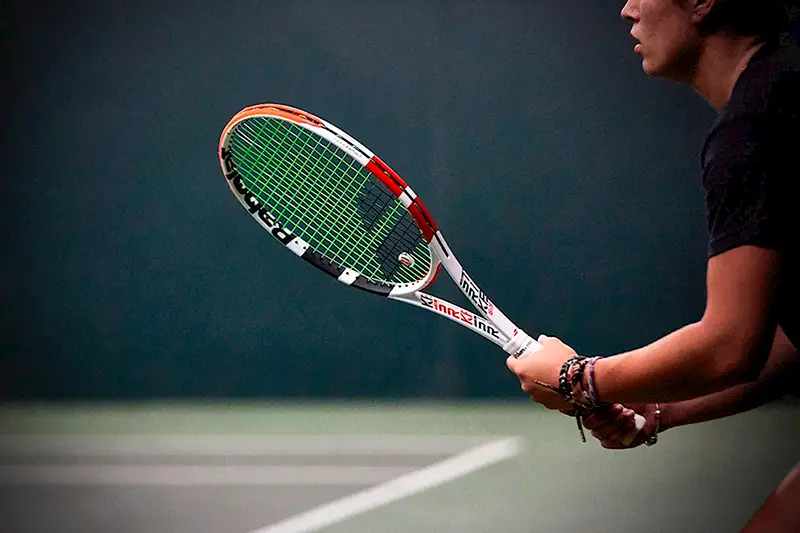 Professionals use racquets that are customised for each element of the game. The density of the strings is for the backhand, the weight is for the serve, and the shape is for the cut. In 2022, the Tecnifibre team conducted a study: changing racquets with a difference of 30g changes the accuracy of the serve by 11%. At this level, every deviation is measured statistically.
Professionals use racquets that are customised for each element of the game. The density of the strings is for the backhand, the weight is for the serve, and the shape is for the cut. In 2022, the Tecnifibre team conducted a study: changing racquets with a difference of 30g changes the accuracy of the serve by 11%. At this level, every deviation is measured statistically.
Advanced players strive for stability and repeatability, so they use the same inventory with grammatical accuracy. Even the logo is aligned clearly on the axis of symmetry.
Effective play requires not only a suitable instrument, but also synchronisation with the rest of the sports equipment. Strings, shoes, balls, surface – everything affects the behaviour of the stroke. The racquet is the key instrument that determines rhythm and stability.

Important parameters:
All characteristics must be taken into account when deciding – only a comprehensive set-up will produce results.
Checking when choosing a racquet requires following the steps:
The question of how to choose a racquet for big tennis is solved comprehensively – only a combination of factors guarantees an exact hit in the personal style of play.
The tennis equipment market is shared by several brands. Wilson and Babolat hold leading positions. Head is actively innovating. Yonex uses non-standard geometry. In the question of how to choose a racquet for big tennis, manufacturers play no less important role than the parameters of the model itself. Brands have different balance, handle structure, string layout – all this affects the feel of the game.
Beginners often choose a heavy sporting tool with an eye to the future, which leads to overloading and injury. The Head Titanium Ti.S6 (252 g, 742 cm²) is a lightweight option with a wide strike zone for beginners. The Wilson Blade 98 (305 g) offers the control and precision demanded by advanced players.
In the segment for beginners, the tennis racket is a model with a lightweight body and an enlarged head. The Babolat Evoke 105 combines affordability and comfort. Yonex VCORE offers flexible balance adjustment, Prince Thunder offers soft cushioning for first practice sessions.
As you level up, the game requires you to revise your inventory. Beginners appreciate lightness and forgiveness. Advanced players adjust parameters: weight, balance, materials.
Mouratoglou experts emphasise that not only weight, but also geometry, stiffness and strings need to be adjusted. After switching to Babolat Pure Strike 100, the junior improved his serve by 8% – SwingVision recorded the result.
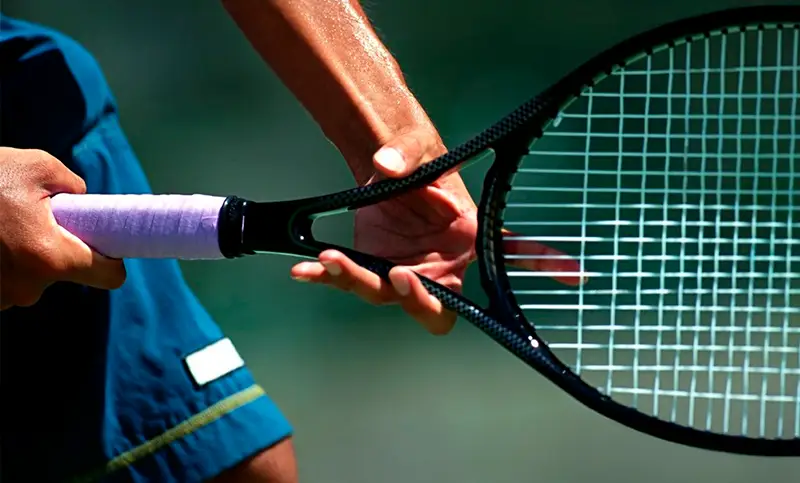 Choosing the right tennis equipment has a direct impact on your technique, comfort of play and scoreboard results. To understand exactly how to choose a tennis racquet, it is important to consider a number of parameters: weight, length, balance, rim construction and brand. The key is to focus not on appearance, but on your stroke mechanics, playing style and goals on the court.
Choosing the right tennis equipment has a direct impact on your technique, comfort of play and scoreboard results. To understand exactly how to choose a tennis racquet, it is important to consider a number of parameters: weight, length, balance, rim construction and brand. The key is to focus not on appearance, but on your stroke mechanics, playing style and goals on the court.
16 years old – an age at which many people are just beginning to build a sporting career. But Mirra Andreeva’s name now sounds like a symbol of triumph. The Russian tennis player won the title, proving that youth and determination can change history. The victory at the tournament in Indian Wells is not just another sensation, but a turning point that can change the balance in women’s tennis.
Before the start of the WTA tournament, Mirra Andreeva was far outside the top ten of the rankings. Her confident play and smart tactics allowed her to beat much more experienced opponents. She now faces new prospects, including a Grand Slam and a chance to compete for the title of world number one.
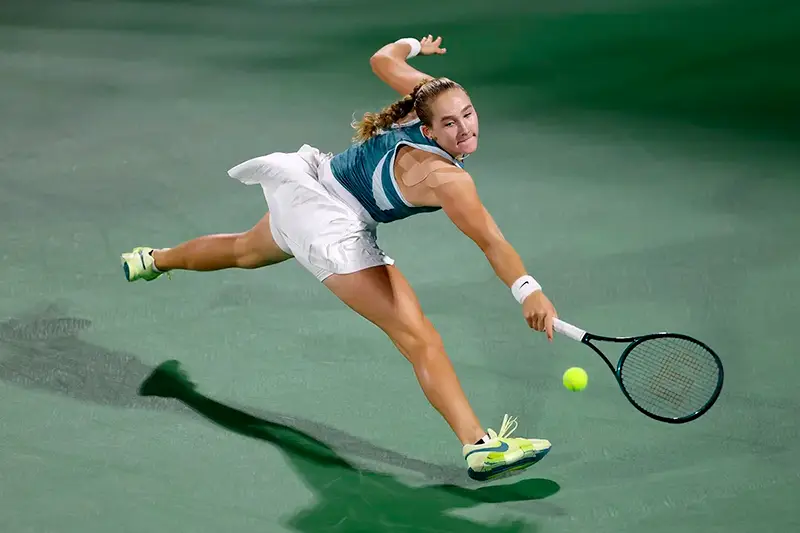 Mirra Andreeva’s every match in Indian Wells was a test of endurance, physical fitness and mental stamina. Already in the early stages of the tournament, she had to fight with tennis players ranked in the top 50 of the WTA rankings. The difference in experience was not a problem. Powerful strokes, the ability to vary the pace of play and the desire to control the game did their job.
Mirra Andreeva’s every match in Indian Wells was a test of endurance, physical fitness and mental stamina. Already in the early stages of the tournament, she had to fight with tennis players ranked in the top 50 of the WTA rankings. The difference in experience was not a problem. Powerful strokes, the ability to vary the pace of play and the desire to control the game did their job.

At the 1/8 finals in Indian Wells, Mirra Andreeva faced one of the most consistent American players on the tour. The match got off to a challenging start, with her opponent actively using flat shots, driving Andreeva deep behind the baseline. After the second set, the Russian turned the tide of the match. She added aggressive attacking actions, playing at the net and forcing her opponent to make mistakes. The result was a confident victory.
The quarter-final was a real test of character. The opponent was the strongest tennis player who has adapted her game to fast surfaces. The first set ended not in her favour, but she managed to level the score and took the deciding round with an advantage. Mirra Andreeva’s victory in this match proved that she is able to rebuild and play with different styles of opponents.
The semi-final game required maximum concentration. Her opponent, experienced and tactically competent, skilfully used crosses and short shots. Andreeva quickly adjusted to the pattern of play, relying on aggressive approaches to the net. Psychological stability, clear implementation of the coach’s plan and coolness in the decisive moments led her to the final.
The final meeting of the tournament in Indian Wells took place in the classic scenario of the struggle between youth and experience. The opponent is the most titled tennis player of the season. Experienced and technical, with a powerful first serve and a varied game. The first game was hers: confident line strokes, sharp angles and minimal errors.
But then Mirra Andreeva started to rise. Her strategy changed: there was more attacking play, an increase in the number of shortened strokes and unexpected trips to the net. This made her opponent nervous, which led to a series of errors on serve.
The key moment came in the third set. With the score 4:4, the Russian realised a break point after an exhausting 27-stroke game. Then, serving for the match, Mirra Andreeva played three flawless games. She executed accurate serves, used unexpected moves and completely controlled the games. The final eis set the stage for the final.
This victory at the Indian Wells tournament was not just a sensation, but a bid for leadership in world tennis. Her composure, her ability to analyse the situation and her resilience under pressure are the qualities that set her apart from other rising stars. The next step is to conquer the Grand Slam and fight for a place as the world number one.
After her triumph at the Indian Wells tournament, Mirra Andreeva’s ranking improved significantly. Now she is confidently among the top 30 best tennis players in the world. This opens the door to participation in the most prestigious competitions, including Grand Slam tournaments.
In addition to rankings, winning has brought recognition and substantial financial support. The prize money makes it possible to hire additional coaches, improve physical fitness and tactical skills. Investing in professional development is important as the competition in women’s tennis becomes tougher. Success at major tournaments will help to strengthen the WTA ranking and get closer to the status of the world number one.

Increased attention from sponsors provides additional support. This is critical to reaching the next level. Requests to participate in elite training camps and invitations to exhibition matches, help gain the necessary experience against the top players on the tour.
 Russian tennis has always been famous for its bright athletes. But recently, young world-class stars have been in short supply. Mirra Andreeva proved in Indian Wells that the new generation is ready to rewrite history. Her style of play combines elements of powerful attack and high mental toughness. This makes her a versatile athlete for all surfaces.
Russian tennis has always been famous for its bright athletes. But recently, young world-class stars have been in short supply. Mirra Andreeva proved in Indian Wells that the new generation is ready to rewrite history. Her style of play combines elements of powerful attack and high mental toughness. This makes her a versatile athlete for all surfaces.
Modern tennis requires strong physical fitness and mental flexibility, the ability to quickly adapt to the style of her opponents. Andreeva already demonstrates these qualities at a young age. She plays confidently on hard court and on dirt. This increases her chances of success in the most prestigious tournaments.
Analysts compare her style to that of legendary champions. They note her extraordinary combination of accuracy, speed and tactical thinking. Andreeva is not afraid to experiment, which makes her an extremely dangerous opponent. It is important to note her composure in the decisive moments of matches. This sets her apart from other young tennis players.
There are names in the tennis world that have come to symbolise success, hard work and self-confidence. One of them is Maria Sharapova. A girl born into a modest family in Russia has become a legend of world tennis. Her path to success is rigorous training, unyielding will and impeccable talent. Every victory and every title is the result of tireless determination and daily hard work. From an early age, the Russian tennis player has shown the character of a champion. How can the success of this outstanding sportswoman be explained and what stages did Masha go through to become a tennis legend?
Maria Sharapova was born on 19 April 1987 in the town of Nyagan in the Khanty-Mansi Autonomous Okrug. The family soon moved to Sochi, where the climate was better suited to life and training. At the age of three, Maria was already holding a racket in her hands and playing with a ball on the city’s beaches and squares. Her parents, Yuri and Elena Sharapova, noticed their daughter’s interest in tennis and decided to seriously support her endeavours. At the age of four, Masha began training under the guidance of Yuri Yudkin, an experienced coach who immediately recognised her outstanding abilities. They trained every day, and even then it became clear that he had a future star on his hands.

In 1993, at a children’s tournament in Sochi, the legendary Martina Navratilova became aware of the young Russian tennis player’s talent. She not only saw Maria Sharapova as a promising player, but also advised her to send her to the USA to develop professionally. The parents decided to risk everything for their daughter’s future. In 1994, Yuri Sharapov and Maria moved to Florida to begin serious training at the famous Nick Bolletieri Tennis Academy. This move was fateful and opened the door to the big sport.
Moving to the USA was a big challenge for the whole family. Her father had several jobs at the same time to finance the expensive education and training. In the meantime, Maria Sharapova devoted all her time to tennis, perfecting her technique and fine-tuning every movement on the court. In 1995, the IMG Academy signed a contract with the young athlete, offering her financial support and the opportunity to train with the best mentors. At the age of 9, Masha was already beating her older rivals with powerful strokes and iron stamina.
In 2000, she had her first major success when she won several junior tournaments. At the age of 14, Maria Sharapova made her debut in adult tennis and played with incredible confidence and composure. Her powerful serves, precise strokes and tactical thinking set her apart from her fellow players. Tennis experts and fans recognised that there was a new star on the court. It was at this moment that the tennis legend began to emerge.
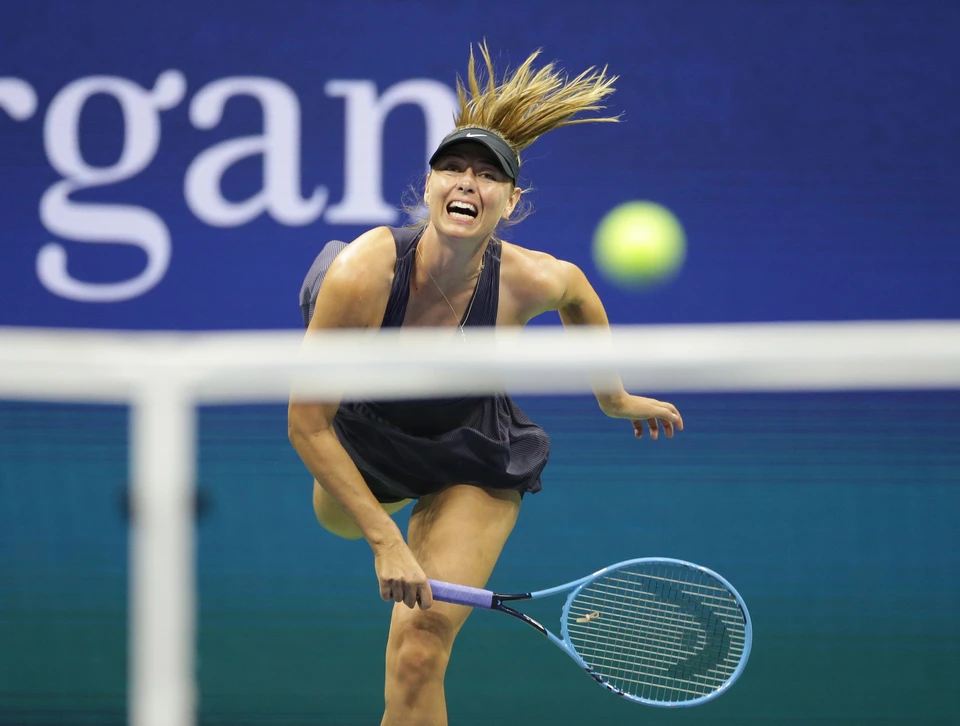 2004 was a turning point in Maria Sharapova’s career. She made history with her sensational victory at Wimbledon. In the final, she defeated one of the most dominant tennis players of the time – Serena Williams. This victory made her the third youngest winner in the history of Wimbledon and secured her a place in the pantheon of world tennis. Powerful strokes, tactical flexibility and an unshakeable will to win have become her trademark.
2004 was a turning point in Maria Sharapova’s career. She made history with her sensational victory at Wimbledon. In the final, she defeated one of the most dominant tennis players of the time – Serena Williams. This victory made her the third youngest winner in the history of Wimbledon and secured her a place in the pantheon of world tennis. Powerful strokes, tactical flexibility and an unshakeable will to win have become her trademark.
The Wimbledon title paved the way for her to reach new heights:
The athlete’s style of play was characterised by aggression and assertiveness. Her tactics were based on powerful backhands and confident serves. She preferred to control the game and not allow her opponents to impose their rhythm.
Maria Sharapova has always been characterised by a high degree of mental strength. Thanks to her self-confidence and composure, she was able to withstand the pressure even in the most critical moments of a match. She was able to stay focussed throughout the match and not let her emotions get the better of her. Her tactical arsenal included a combination of powerful attacking shots and skilful defence.
Key tactics:
Maria Sharapova not only dominated the tennis court, but also played an important role in popularising tennis around the world. Her victories on the international stage have sparked interest in the sport, especially among young girls. She became an example of how talent, discipline and determination can lead to great success.
The tennis player is also active in charity and business off the court. In 2007, she founded the Maria Sharapova Foundation, which gives young athletes from disadvantaged families access to sports training. Masha is also a UN Goodwill Ambassador and actively supports projects in the areas of education and children’s health.
Her business projects include the launch of the Sugarpova candy brand, which quickly became popular due to its quality and original design. Maria Sharapova has successfully managed her brand, setting an example of how a sportswoman can become a successful businesswoman.
During her career, Maria Sharapova has won many titles and honours that have forever inscribed her name in the history of world tennis. The most important successes include:
The biography of the great tennis player is a story of victories and overcoming. In 2016, she was disqualified for taking meldonium. This period was a severe test for her career and her reputation. However, Masha found the strength to return to the court and prove her skills once again.
In 2020, Maria Sharapova announced the end of her career and left behind a colourful legacy. Her name has become a symbol of bravery, professionalism and the pursuit of excellence. She continues to inspire millions of people and proves that hard work and belief in yourself can lead to great things.

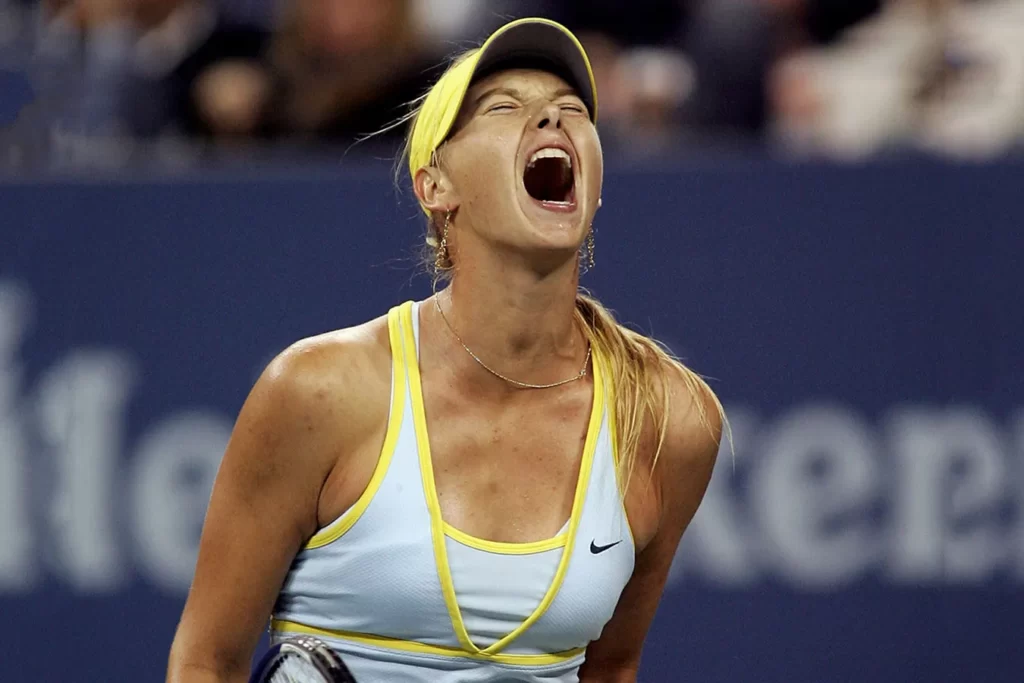 Maria Sharapova’s story is a vivid example of how talent and hard work can lead to outstanding results. Her journey from a humble childhood in Russia to world fame shows that the impossible is possible if you are prepared to work hard and not give up. Maria Sharapova will always be remembered as a tennis legend whose contribution to the sport will inspire future generations.
Maria Sharapova’s story is a vivid example of how talent and hard work can lead to outstanding results. Her journey from a humble childhood in Russia to world fame shows that the impossible is possible if you are prepared to work hard and not give up. Maria Sharapova will always be remembered as a tennis legend whose contribution to the sport will inspire future generations.
Tennis is a theatre of struggle, where every racket becomes a weapon and the court becomes a battlefield. Women in sport write history with their strokes, turning balls into projectiles and games into emotional battles. Among the title-winning players are those whose victories have defined the face of world tennis. Every era knows its champions, but some names remain eternal. Their contributions are not only records, but also changes in playing style, marketing and fitness.

The most famous female tennis players are a symbol of tenacity, elegance and strength of character. Their careers span decades and their legacies continue to inspire new players. When compiling the rankings, we took into account titles, style of play, and impact on the industry.
The most famous female tennis players have travelled a thorny path from youthful ambition to universal recognition. Their professional rise is not just a collection of trophies, but a powerful influence on sports culture. Women have written their names in history not only through the awards they have won, but also through their individual style, innovative strategies, and unconventional approaches. What defines “legendary” status? Is it the number of titles won, the nation’s love, the significant contribution to the evolution of tennis? Or is it something more?
There are several of them:
 The world will always remember these names:
The world will always remember these names:
The most famous female tennis players go beyond sport to become icons of style, marketing, and cultural change. Their influence is felt in sports performance, fashion, advertising and even social movements. Their lifestyle and behaviour on and off the court shape the perception of modern athletes, setting trends and new standards. The secret of their victories lies not only in their personality, charisma and style, but also in their ability to use their image to influence the world.

Factors of popularity: what makes a tennis player a legend:
Legendary tennis players are not just champions, but personalities that shape public opinion, set trends and inspire millions of fans around the world.
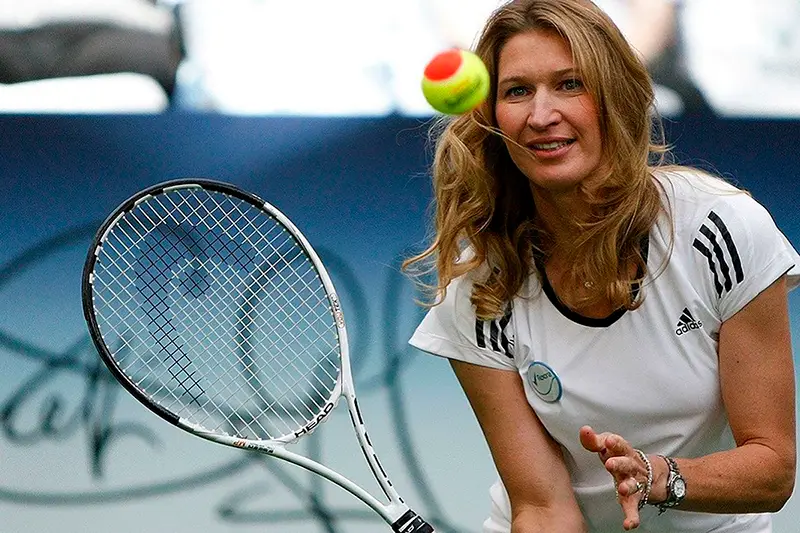 The most famous female tennis players are more than just athletes. Their names epitomise eras. There are no random victories in the world of tennis. Behind every title is hard work, overcoming obstacles and continuous improvement. Today, tennis is experiencing a new wave, but the place of women’s tennis legends will forever remain in history.
The most famous female tennis players are more than just athletes. Their names epitomise eras. There are no random victories in the world of tennis. Behind every title is hard work, overcoming obstacles and continuous improvement. Today, tennis is experiencing a new wave, but the place of women’s tennis legends will forever remain in history.
Choosing the right tennis racket determines how effectively a player can fulfil their potential on the court. Whether beginner or professional, the right equipment contributes to better control and power of strokes and helps to avoid injuries. In 2024, the choice is even more technologically complex as innovations from major brands offer new levels of control and comfort.
Choosing the wrong parameters, such as weight or balance, can lead to increased wrist fatigue or even injury. For beginners, for example, a racket that is too heavy puts additional strain on the wrist, while a lighter racket can limit the performance potential of professionals.

When choosing a tennis racket, the level of play should be taken into account, as the different models offer different characteristics for beginners and professionals.
Beginners should choose the instrument that allows them to master the basic elements of the game more quickly without overloading their muscles and joints. Some important features will help you make the right choice:
Tennis pros have very different requirements for their rackets. Stiffness, weight and material play an important role:
These parameters ensure maximum performance and precision at ATP and WTA tournaments.
 The different brands offer different approaches in terms of technology and price. Below you will find some of the most popular manufacturers:
The different brands offer different approaches in terms of technology and price. Below you will find some of the most popular manufacturers:
The materials used to make tennis rackets have a significant impact on their performance and comfort while playing:
The choice of material depends on the player’s experience and playing preferences.
The choice of the right model depends directly on the player’s level of experience. In 2024, the market offers a wide range of options for every level.
To make your choice easier, here is a ranking of the best tennis rackets for 2024:
Tennis rackets for men and women can be different. Weight, balance and grip size are the main differences:
The women’s models have a thinner handle for more grip and comfort. The Babolat Pure Strike, for example, has special grip sizes for women that improve playing comfort.

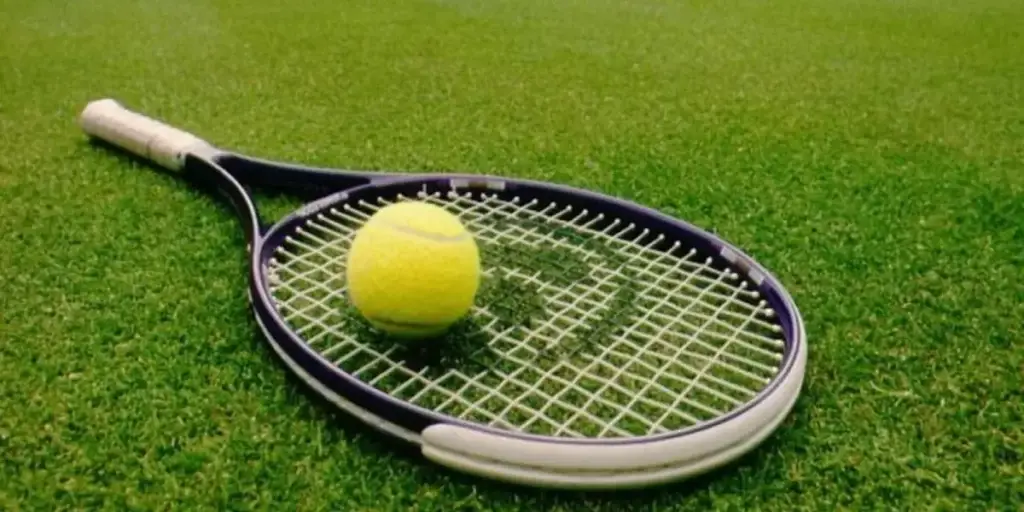 Choosing the right tennis racket plays a crucial role in your success on the court. The wrong instrument can lead to injuries such as tendonitis due to inadequate weight and balance control. Test several models thoroughly to find the one that maximises comfort and performance.
Choosing the right tennis racket plays a crucial role in your success on the court. The wrong instrument can lead to injuries such as tendonitis due to inadequate weight and balance control. Test several models thoroughly to find the one that maximises comfort and performance.
Tennis is not just a sport, but an industry with multi-million dollar fortunes. The richest tennis players earn money not only from tournaments, but also from large sponsorship contracts, advertising deals and investments. Financial success in tennis has long ceased to depend solely on victories on the court – it is the result of a comprehensive strategy, brand management skills and the right commercial decisions.
Many tennis players today are businessmen, making deals with the world’s leading corporations. They become the faces of major brands, their social networks bring in millions, and their participation in international campaigns increases their capital. In 2025, the list of the highest paid tennis players has changed: new stars have confidently joined the elite, while experienced players continue to earn huge money.
The earnings of professional tennis players are built not only on prize money for victories, but also gigantic sums from contracts with brands. This year’s list of the highest paid tennis players of 2025 is headed by both familiar and new faces.
Being at the top of the rankings is a skill and the ability to attract sponsors. The highest-paid tennis players earn incomes that go far beyond the prize money of tournaments.

This year’s list is topped by:
These players have proven that tennis is not just a sport, but a huge business. They earn money not only from victories, but also from competently building their careers off the court.
 Tournament prize money is a key component of a professional athlete’s income. Highly paid tennis players receive impressive sums for participating in prestigious tournaments. In 2025, the biggest tournaments increased their prize money, allowing tennis players and tennis players to earn even more.
Tournament prize money is a key component of a professional athlete’s income. Highly paid tennis players receive impressive sums for participating in prestigious tournaments. In 2025, the biggest tournaments increased their prize money, allowing tennis players and tennis players to earn even more.
Grand Slam tournaments remain the most lucrative:
In addition to the Grand Slams, the ATP and WTA Finals also provide impressive payouts. These tournaments bring together the most successful tennis players at the end of the season, and the champions receive up to $4.5 million.
It is important to realise that prize money is only part of the earnings. The tennis players with the highest salaries in 2025 earn millions through proper career management. Advertising contracts, personal brands and business investments allow the world’s richest tennis players to remain financially stable even after their careers are over.
The most successful tennis players sign contracts with the world’s leading brands. Athletes have long been the main faces of advertising campaigns. Key sponsors for 2025 include Nike, Adidas, Rolex, Red Bull and Louis Vuitton, who are investing millions of dollars in promotion through athletes. In 2025, the biggest promotional contracts are: Yannick Sinner, Iga Schwentek and Madison Keys. Their partnership agreements are valued in the tens of millions of dollars.
Madison Keys tops the list of the highest paid tennis players of 2025 thanks to her impressive tournament wins and contracts with leading brands. Her aggressive style of play and charisma make her the perfect advertising face.
Yannick Sinner is ranked second. This young talent from Italy has soared to the top thanks to his outstanding play on hard court. His contracts with Nike and Lavazza have generated a significant amount of income.

Iga Schwentek became the face of major European banks and got a contract with Porsche.
Tennis players are particularly popular in advertising due to their striking images and media influence. Arina Sobolenko and Mirra Andreeva actively cooperate with global cosmetics and jewellery companies, while Elena Rybakina has signed an exclusive contract with a leading watch manufacturer.
Mirra Andreeva is one of the brightest young tennis players. Her dramatic rise in the rankings and her victories over more experienced opponents have made her a new star. Companies are already offering her multi-million dollar contracts.
Alex de Minor is Australia’s premier talent. His game is characterised by his speed and aggressive attack, and his expert career management makes him one of the highest paid tennis players of 2025.
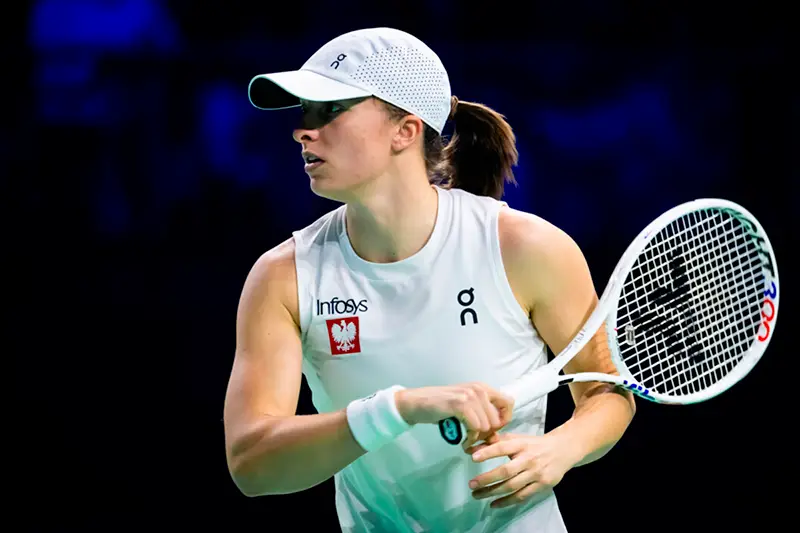 Financial success in tennis is as much about talent as it is about building a career strategically. The highest-paid tennis players of 2025 are not just winning on the court, they are also smartly developing their brands, signing lucrative contracts and investing in promising areas. Young talents such as Mirra Andreeva and Yannick Sinner could top the rankings in the coming years. Their potential, sporting achievements and commercial flair will allow them to earn even more. Tennis remains one of the most lucrative sports and its stars continue to turn their popularity into multi-million dollar fortunes.
Financial success in tennis is as much about talent as it is about building a career strategically. The highest-paid tennis players of 2025 are not just winning on the court, they are also smartly developing their brands, signing lucrative contracts and investing in promising areas. Young talents such as Mirra Andreeva and Yannick Sinner could top the rankings in the coming years. Their potential, sporting achievements and commercial flair will allow them to earn even more. Tennis remains one of the most lucrative sports and its stars continue to turn their popularity into multi-million dollar fortunes.
The Laver Cup brings together the best tennis players in the world to test their strength on a global level. The spectacular format, the star-studded line-up and the legendary atmosphere make this tournament one of the most exciting events in the tennis world. In this article, you will find out why the Laver Cup is so important, what makes it so special, who the winners are and what significance this tournament has for international sport.
The Laver Cup was created in honour of the legendary Australian tennis player Rod Laver. The tournament was launched in 2017 when Roger Federer put his idea into practice in collaboration with the ATP organisation. Since then, it has been held every year, with the exception of seasons in which the world situation hinders international competition. Teams from Europe and around the world compete against each other, similar to the Ryder Cup in golf.

Historical facts:
The format is an interesting mix of singles and doubles matches. The tournament is played over three days, each of which is of different importance. There are two teams: Team Europe and Team World, each made up of six of the best tennis players in their region.
Characteristics:
 The participants are the best representatives of world tennis. The European team almost always includes stars such as Roger Federer and Rafael Nadal, while the world team is made up of the strongest tennis players from North and South America, Asia and other continents. Each of these players contributes to creating colourful and memorable moments on the tennis court.
The participants are the best representatives of world tennis. The European team almost always includes stars such as Roger Federer and Rafael Nadal, while the world team is made up of the strongest tennis players from North and South America, Asia and other continents. Each of these players contributes to creating colourful and memorable moments on the tennis court.
The line-up and interesting moments:
In recent years, Team Europe has won the most tournaments. This success is due to the fact that it consists of top stars such as Federer, Nadal and Djokovic. However, Team World has also achieved good results and the matches are becoming more intense each time.
Notable successes:
The Laver Cup has made an important contribution to the popularisation of team tennis. The tournament has become not only a stage for competition between the strongest players, but also a platform for demonstrating sportsmanship, respect and friendship between tennis players.
The competition attracts the attention of millions of fans and significantly increases interest in team tennis matches. The tournament serves as a strong motivating factor for young players, giving them the opportunity to watch and learn from the best tennis players in the world.
The Laver Cup also promotes sportsmanship and unity by bringing even the most irreconcilable rivals together and creating a unique atmosphere that inspires participants and spectators alike. The influence of the Laver Cup can also be felt in the development of the structure of the tennis tournament itself. It offers an alternative approach to the game that differs from traditional competitions and brings fresh ideas to the world of professional sport.

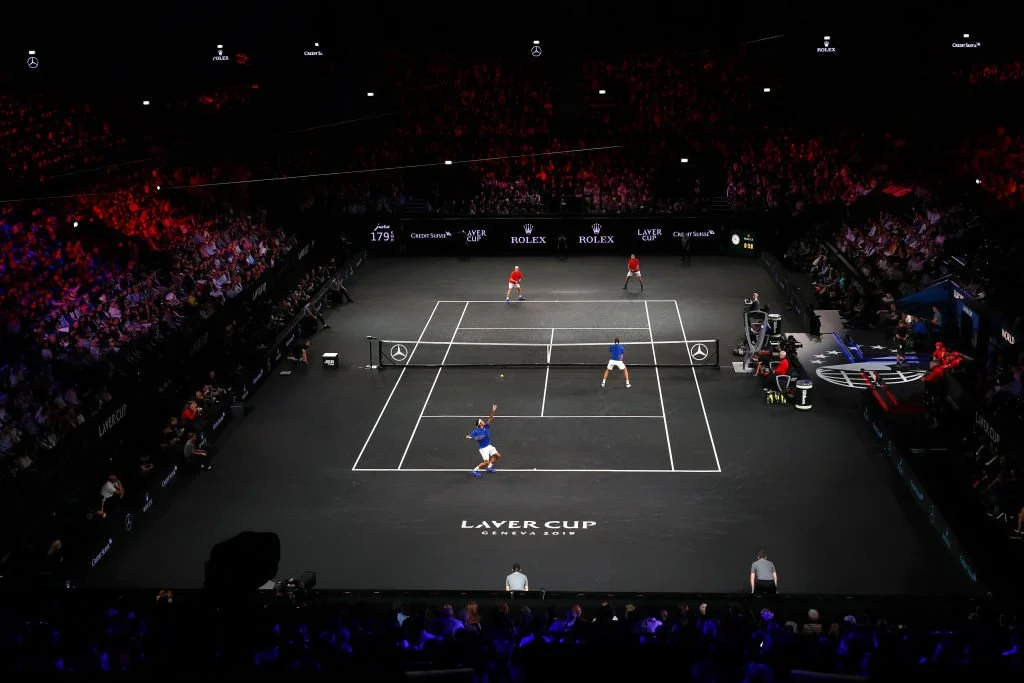 The Laver Cup is much more than just an international tennis tournament. It not only demonstrates the skills of the participants, but also the importance of team spirit and the ability to work together towards a common goal. The tournament provides a platform for real stars who are not afraid to challenge themselves and their opponents. Whether you are a European or a world team, the Laver Cup offers every spectator a unique combination of sport, emotion and the true magic of tennis.
The Laver Cup is much more than just an international tennis tournament. It not only demonstrates the skills of the participants, but also the importance of team spirit and the ability to work together towards a common goal. The tournament provides a platform for real stars who are not afraid to challenge themselves and their opponents. Whether you are a European or a world team, the Laver Cup offers every spectator a unique combination of sport, emotion and the true magic of tennis.